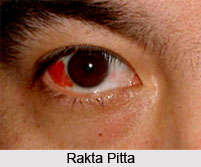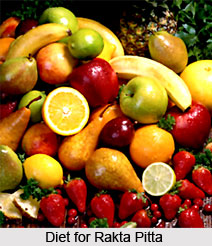 Haemorrhage means any escape of blood from the vessels, which normally carry it. Hemorrhage is the loss of blood from the circulatory system.Bleeding can occur internally, where blood leaks from blood vessels inside the body. It can also happen externally either through a natural opening such as the vagina, mouth or rectum, or through a break in the skin. The complete loss of blood is referred to as exsanguination, and desanguination is a massive blood loss. Loss of 10-15% of total blood volume can be endured without clinical sequelae in a healthy person, and blood donation typically takes 8-10% of the donor`s blood volume.
Haemorrhage means any escape of blood from the vessels, which normally carry it. Hemorrhage is the loss of blood from the circulatory system.Bleeding can occur internally, where blood leaks from blood vessels inside the body. It can also happen externally either through a natural opening such as the vagina, mouth or rectum, or through a break in the skin. The complete loss of blood is referred to as exsanguination, and desanguination is a massive blood loss. Loss of 10-15% of total blood volume can be endured without clinical sequelae in a healthy person, and blood donation typically takes 8-10% of the donor`s blood volume.
Causes and Symptoms: A haemorrhage may be external, as in the case of an injury. It may also be internal, due to an injury sustained in an accident by a blow, as in a fight. It can also happen due to the bursting of an ulcer in the stomach or due to some other disorder of an internal organ. Arterial haemorrhage is more serious than venous. In this case the blood from an artery is bright in colour and comes out in spurts corresponding to the heartbeat. The haemorrhage from a vein is slow and the blood, dark in colour.
In the case of a large artery being involved as the femoral artery, the blood loss is so rapid and copious that unless treated in time, the patient may not have long to live. Small arteries, when cut, may automatically close after some time due to their tendency to retract into the surrounding tissues, but surgical interference is necessary in the case of large arteries being torn. Applying pressure to the affected area can control a venous haemorrhage. In serious cases of blood loss, the patient may have to be hospitalized for blood transfusion to make up the loss of the vital fluid.
 Haemorrhage may be in the form of haematemesis i.e. vomiting of blood or sudden discharge of blood from other orifices of the body, as in piles. Ayurvedic theory ascribes bleeding to Rakta Pitta or the vitiation of the pitta in the blood. That is why Ayurvedic practitioners do not immediately stop the bleeding in a healthy individual. It is the vitiated blood, full of toxins, which is the first to come out of the body in a case of haemorrhage. This should be allowed to flow for some time, keeping in mind, of course, the patient`s physique. If the bleeding is checked immediately, it may give rise to other disorders such as fainting, fever, loss of appetite, and other ailments.
Haemorrhage may be in the form of haematemesis i.e. vomiting of blood or sudden discharge of blood from other orifices of the body, as in piles. Ayurvedic theory ascribes bleeding to Rakta Pitta or the vitiation of the pitta in the blood. That is why Ayurvedic practitioners do not immediately stop the bleeding in a healthy individual. It is the vitiated blood, full of toxins, which is the first to come out of the body in a case of haemorrhage. This should be allowed to flow for some time, keeping in mind, of course, the patient`s physique. If the bleeding is checked immediately, it may give rise to other disorders such as fainting, fever, loss of appetite, and other ailments.
Home Remedies: In haematemesis, the drug of choice is amla or Emblica offtcinalis. Juice of this fruit should be given in 50 ml doses thrice a day. Similarly, juice of kushmanda or Benincasa hispida could be administered in 50 ml doses thrice daily. Alternatively, Pravala Pishthi may be administered in 1 gm doses thrice in the day. For checking the bleeding, iced or refrigerated water should be given.
Medicines & Prescriptions: In other cases of Rakta Pitta, Raktapittakulakand Rasa is a better remedy. It should be given in doses of 250 mg to 1 gm thrice daily. Pittantaka Rasa, Chandrakala Rasa, Ushirasava, and Mahapittantaka Rasa are some of the other Ayurvedic remedies useful for this condition.
In case of internal haemorrhages, the patient should be warned to learn to recognize the signs of excessive bleeding. They are palpitations, a sense of uneasiness, weakness, and profuse sweating. If the blood pressure of the patient has fallen considerably and continues to fall, immediate recourse to blood transfusion must be taken to save his life.
Diet and Other Regimen: A strict regimen of diet and abstinence from foodstuffs, which may aggravate pitta, is as important as the drugs prescribed above. Fruits like amla, dates, pomegranate, oranges, apples, bananas, grapes and dried grapes; juice of sugarcane, and water of coconut; and non-irritating vegetables are recommended.
The patient is advised to take complete rest and stay in cool surroundings. In summer, he should migrate to a cold climate.




